10 Alternatives to Central Air to Cool You Down More Easily
Author: Omar Alonso | Editor: Omar Alonso
Review & Research: Jen Worst & Chris Miller

The blistering summer months with rising temperatures make it practically impossible to stay indoors without climate control. Older buildings, especially in big cities, need alternatives to central air since it wasn't built in.
Around 3/4th of the homes in the United States use central air conditioning, which adds up to around 6% of the electricity produced across the country, claims the US Energy Department.
Central air conditioning can be quite expensive and if you’re looking for ways to cut your energy consumption, utility bills, or just don’t want to install an HVAC system for your home...
10 Alternatives to Central Air
There are still several alternatives that can help to keep your home cool and comfortable in the hotter months. So, read on to know about some of the popular alternatives to central air conditioning.
Portable Air Conditioner
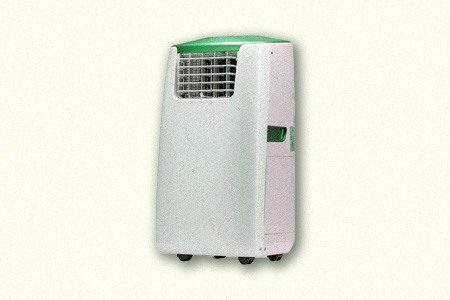
Portable air conditioners are compact units that you can move from one room to another as required. These units come along with adapter kits that release hot air via the window, opening in the wall or the fireplace.
In the day, you can simply plug in the air-con into a power outlet and use it in the living room and move it to your bedroom at night. Portable A/C's are extremely convenient types of air conditioners.
Portable air conditioners don’t require professional installation and are quite easy to use. All you need is an electric outlet and a window for the condensation tube.
A portable air conditioner is a really convenient alternative to central air conditioning. However, portable air conditioners have some limitations.
They aren’t very energy efficient and are much noisier, as well as expensive compared to other air conditioning systems. They take up floor space and moving the unit from one room to another can become quite tiresome.
Often, people find that using multiple window air conditioners is a more practical and less expensive option compared to portable models. Among the central air conditioning alternatives, toting one of these around with you makes a lot of sense.
Mini-Split or Ductless Air Conditioner
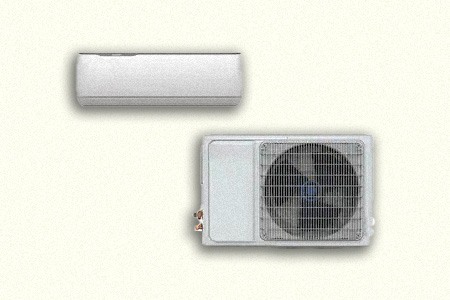
It can get quite cumbersome and expensive to get between the walls and install the ductwork for an air conditioning system and a better option is to go for air conditioning with a ductless system.
Also known as a mini-split air conditioner, these systems have a condenser unit that is installed outside the home. These central air alternatives are great as long as you can trust nobody to be outside tampering with the units.
Each room has smaller units, which are fixed on the wall and are connected to the main condenser unit. The biggest advantage of such a system is that you can adjust the temperature of each individual unit as required.
Window Air Conditioner
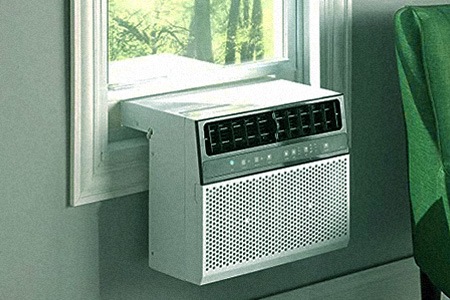
This is probably the most common and popular alternatives to central air conditioning. Less expensive compared to central air conditioning systems, window air conditioners can cool down large rooms very effectively.
Window air conditioners are available in a wide range of sizes, designs and cooling capacities and are especially popular options for apartments and homes with smaller rooms.
Window air conditioners are usually installed on windows. The installation of the unit is very simple and you can do it on your own.
And if you’re relocating, you can simply take it down and carry it along. Window air conditioners don’t occupy floor space and provide quick and effective cooling.
However, the drawback of window models is that a single unit can’t cool the entire home like a central air conditioning system, which means that you’ll have to install multiple units in different rooms.
Also, since these units are installed on windows, they can block the natural light in the room.
Evaporative or Swamp Air Cooler
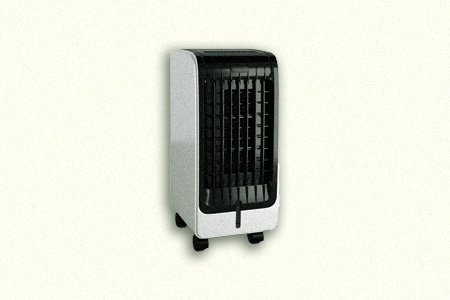
Evaporative coolers, also known as swamp coolers, are a common cooling option in areas with dry climates. These coolers work by evaporating the water and blowing it into the air.
Evaporative coolers comprise a water-soaked pad or sponge and a fan, which blows air through the pad and blows the cooled air into the room.
When the humidity is less than 50%, the evaporative cooler will cool your home effectively and can reduce the temperature by 10 degrees or even more. As far as AC alternatives go, that's pretty spectacular.
Swamp coolers are available in varying sizes. They are quite lightweight and portable, making them quite easy and practical to use in several places.
They are easy to clean and maintain and they don’t use any harmful coolant chemicals like air conditioners. Much more affordable than air conditioners, evaporation coolers can cool your space more effectively than a fan.
However, evaporative coolers are effective only in places where there is no or very little humidity and if you live in a dry place, then these coolers are a great, energy-efficient option.
However, the electric bills you save on may be canceled by increased water use. Also, these coolers don’t work very well in humid climates.
Electric Fans
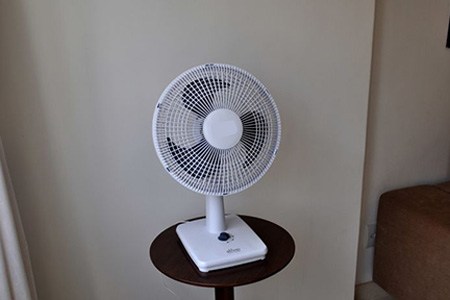
Fans have been around for several decades, much longer than any other cooling system. These types of fans are the simplest and most affordable cooling options and quite effective too.
Fans don’t reduce the temperature. Instead, they cool the room by moving the air around, increasing air circulation and creating a breeze.
There are various types of fans available—ceiling fans, pedestal fans, desktop fans, box fans, tower fans and stand fans that all make great alternatives to central air.
Fans are very cheap and you can purchase one very easily. They are much safer than air conditioning systems because they don’t use any refrigerant gas or coolant chemicals. You also don't have to deal with a thermostat not receiving power or configuring it and all those other little annoyances.
Fans are compact and don’t take up a lot of room and except ceiling fans, which are fixed to the ceiling, all other models can be moved around wherever you need cooling. They won't cool the whole home but as far as central AC alternatives go, blowing one right at you while you sleep or sit on the couch feels great.
However, some of the limitations of electric fans are that they don’t really cool the air around, but simply move it around. So, they may not be very effective in very hot temperatures. It helped me sleep when I was young since my bedroom was always so hot.
Fans can be quite noisy when in operation. Also, fans need regular cleaning because the accumulated dust and dirt can irritate your respiratory system and cause allergies.
Window Fans
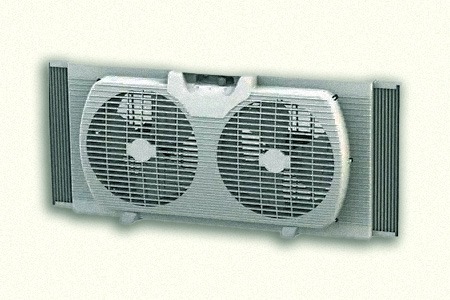
If you live in an area where the nights are cooler, you can cool your home by simply opening the windows. However, by placing a window fan, you can accelerate the cooling. Window fans are very simple units, inexpensive and energy efficient too.
If you have a two-storied house, then the window fan will deliver the best results by pulling in the cooler air through the windows on the lower floor. These are great ceiling fan alternatives and possibly even better depending on the temperature outside.
When the air gets warmed up, it rises and gets out of the upper floor windows, creating a cooling and refreshing breeze in your entire home, keeping it nice and cool.
Attic Fans
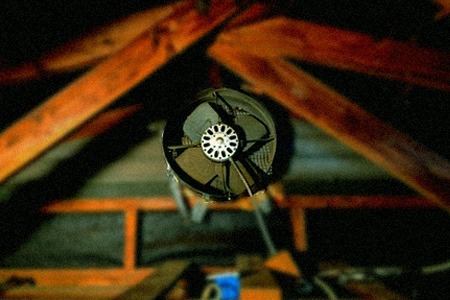
An attic fan essentially is a more simplified version of an evaporative cooler. Attic fans are very simple to install and they cool your home by circulating the air and pushing the warm, stuffy air out and creating a constant breeze.
Installed properly, an attic fan can cool your home by several degrees and provide good ventilation. A cost-effective and energy-efficient option compared to central air conditioning, attic fans work best when it’s not very hot.
However, the limitations of attic fans are that not all homes have an attic and may be difficult to install. These fans are not as effective compared to an air conditioner.
While these fans do help to cool your home by a few degrees, in extremely hot areas, attic fans may not be very effective. As far as alternative air conditioning solutions go, these are a must if you have an attic but don't get the job done all the way.
Misting Fans
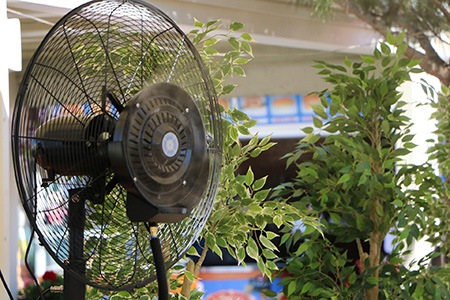
Misting fans are usually installed and used in outdoor areas such as the patios, gardens, decks, etc. The mist blowing around makes misting fans perfect humidifier alternatives as well indoors.
Misting fans are usually connected to a cold water tap and use the principle of evaporation to produce a very fine mist that cools the surrounding area. These won't make great alternatives to central air conditioner but can make you more comfortable for the time being.
They can produce effective coolness minus any humidity. If the temperatures are extremely high, you can also make use of misting fans indoors; however, they can be only used in large rooms for a short period of time.
Geothermal Systems
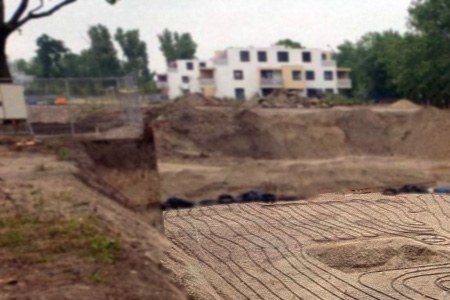
Not very common among the alternatives to central air conditioning, geothermal heating and cooling systems makes use of the stable temperatures underground.
Geothermal systems consist of tubes buried in the ground, which are filled with water. This is known as a heat exchanger.
The system works by exchanging the heat from your home to the ground and cooling your home, while in the colder months, the heat is transferred from the ground to your home.
Geothermal cooling is quite effective for cooling your home and works as well as a central air conditioning system.
A geothermal system can be around 65% more energy efficient compared to a conventional HVAC system. However, a geothermal system is quite expensive and installing the system needs a lot of work because you need to dig a lot to bury the pipes underground.
Natural Air Circulation
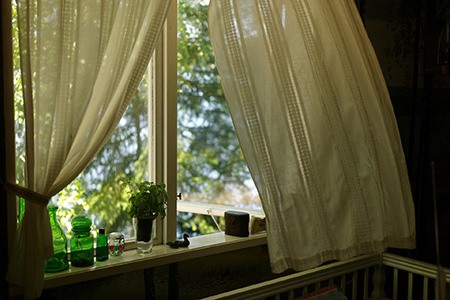
Cooling your home naturally is the easiest and most inexpensive (rather free) alternative to central air. Just by opening a few windows, you can cool your home and reduce the temperature indoors by several degrees.
The best way to achieve good air circulation is to open windows on opposite sides of your home to let in the breeze from both directions, which can help to cool your home significantly.
However, this method may not be very effective if the area you live in is very hot and dry. Also, this method may not cool your home sufficiently to make it comfortable during the hotter months.
Alternatives to Central Air That Are Easier to Use
Central air conditioning is used to cool the air practically everywhere, whether in homes, workplaces, movie theaters, malls, etc. Central air conditioning can help to keep the area pleasantly cool and comfortable.
However, it may not be the best option and has many drawbacks. Air conditioning can be bad for your health, it is expensive and not very environmentally friendly.
So, if you’re looking for a better and safe alternatives to central air conditioning, then you could consider one of the other options that we’ve discussed in this article.



